History of Libraries
at UNC Greensboro
■ 1892
First Library in Main Building (Foust)
When our campus’ doors opened Oct. 5, 1892, the tiny library was in a Main Building classroom. President Mclver provided its first books from his own collection, an alumni magazine reported. Two years later, a larger room was secured. Annie Petty, recognized as the first professionally trained librarian employed in North Carolina, had charge of the textbooks. The circulation record was kept in a ledger, students and faculty listed alphabetically, with titles of books by each name.
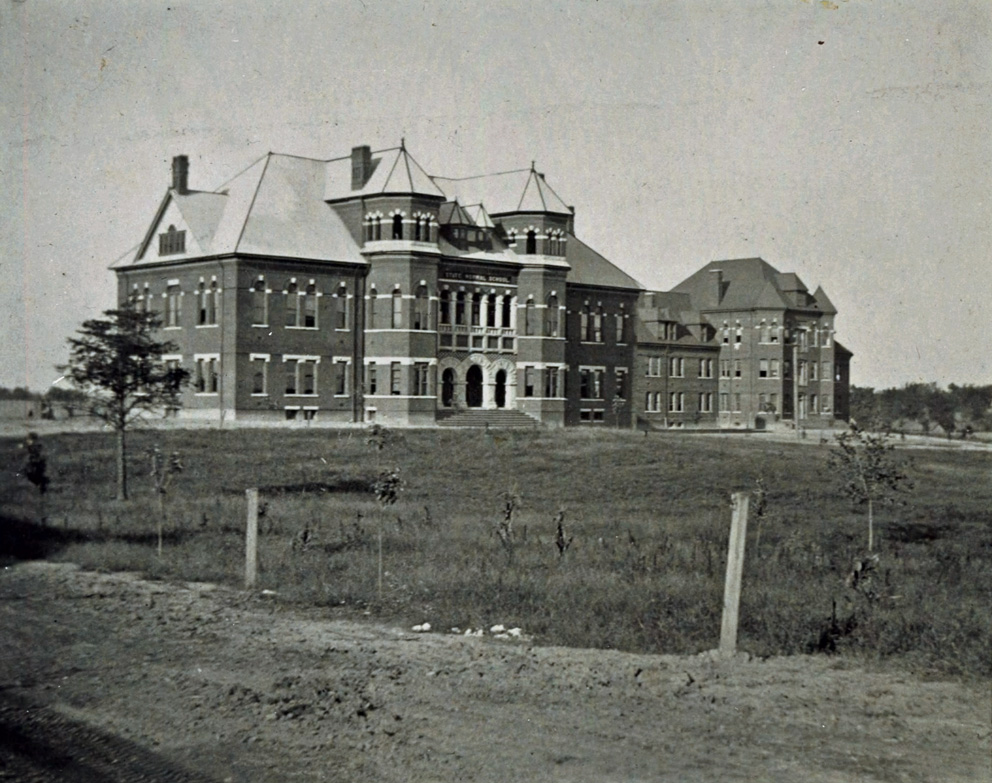
■ 1905
Carnegie Library Opens
Mclver convinced philanthropist Andrew Carnegie to fund a library building (his second in Greensboro and his first ever to a college). It opened in 1905, with Petty in charge. Carnegie added nearly $4,000 to his original gift of $15,000 for furniture and shelving, for a total cost of $18,868 (roughly $65.5 million today). Today, it’s known as Forney Building.
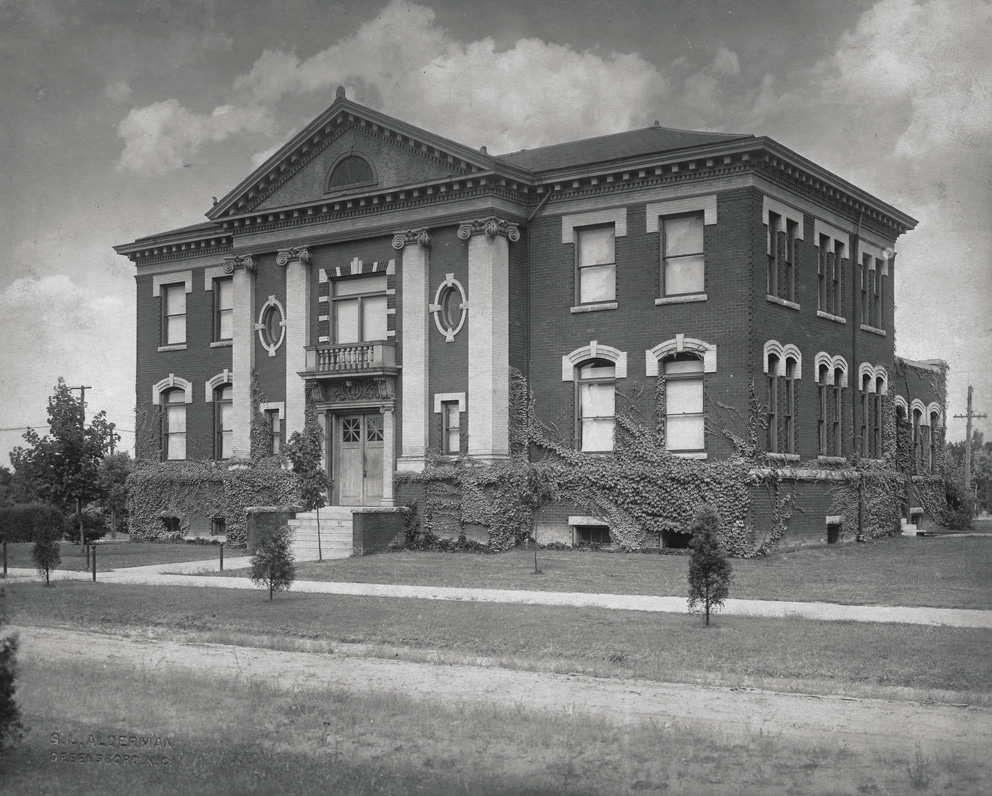
■ 1932
Fire Damages Carnegie Library
In 1932, a fire damaged the Carnegie Library building and many of its books. Even today, the University Archives (SCUA) preserves some of those charred or singed books. While the building underwent repairs, temporary quarters for the library were set up in Students’ Building across College Avenue, but the building soon reopened.

■ 1948
Jackson Library Groundbreaking
After WWII ended, the NC Legislature allocated funds for a new library and equipment. The City agreed to close Walker Avenue, which ran straight through campus, providing a central site for it. In this 1948 photo is Chancellor Jackson, with shovel, on Walker Avenue. UNC System President Frank Porter Graham is closest to him.
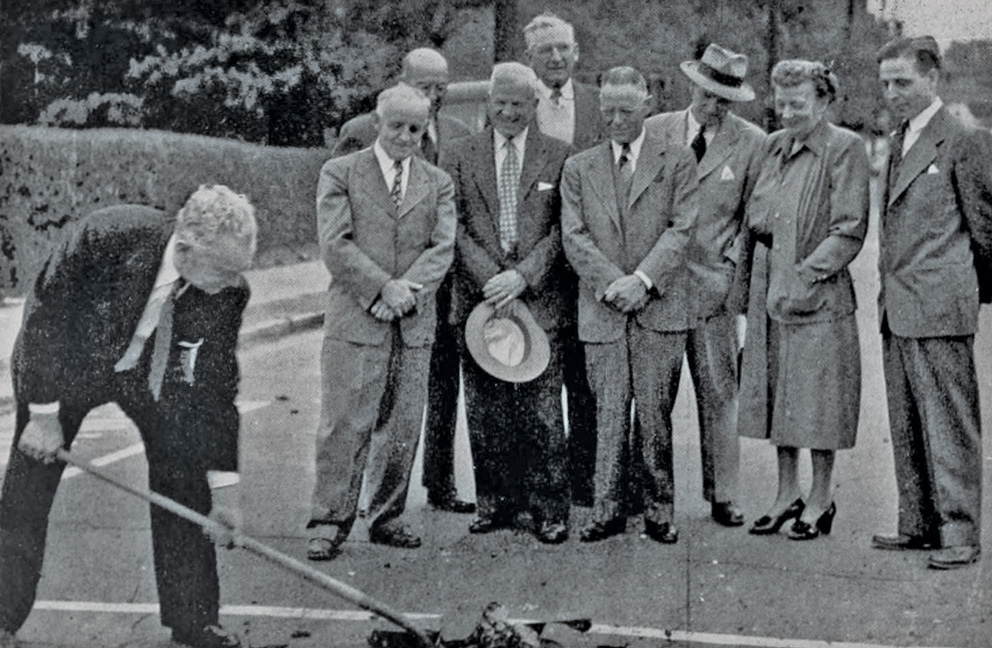
■ 1950
Jackson Library Opens
The new library, which opened in 1950, was named for former Chancellor Jackson in 1960. It was designed by firm Northrup O’Brien for a capacity of 300,000 volumes and facilities to accommodate 3,000 undergraduates.
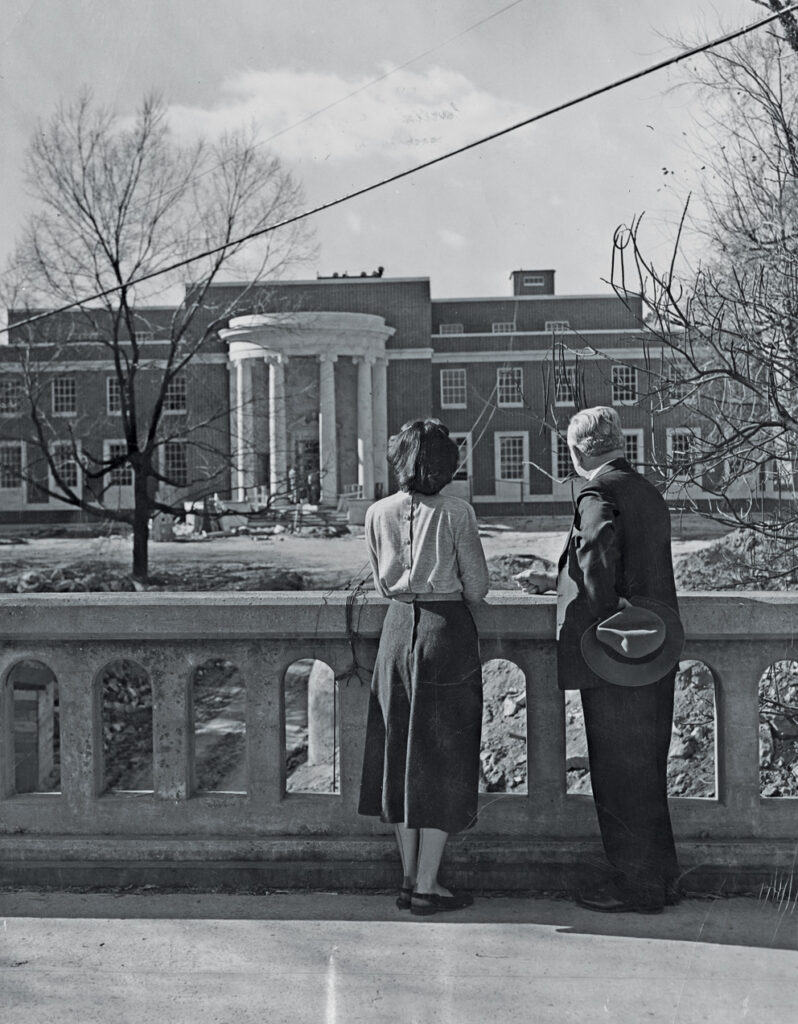
■ 1973
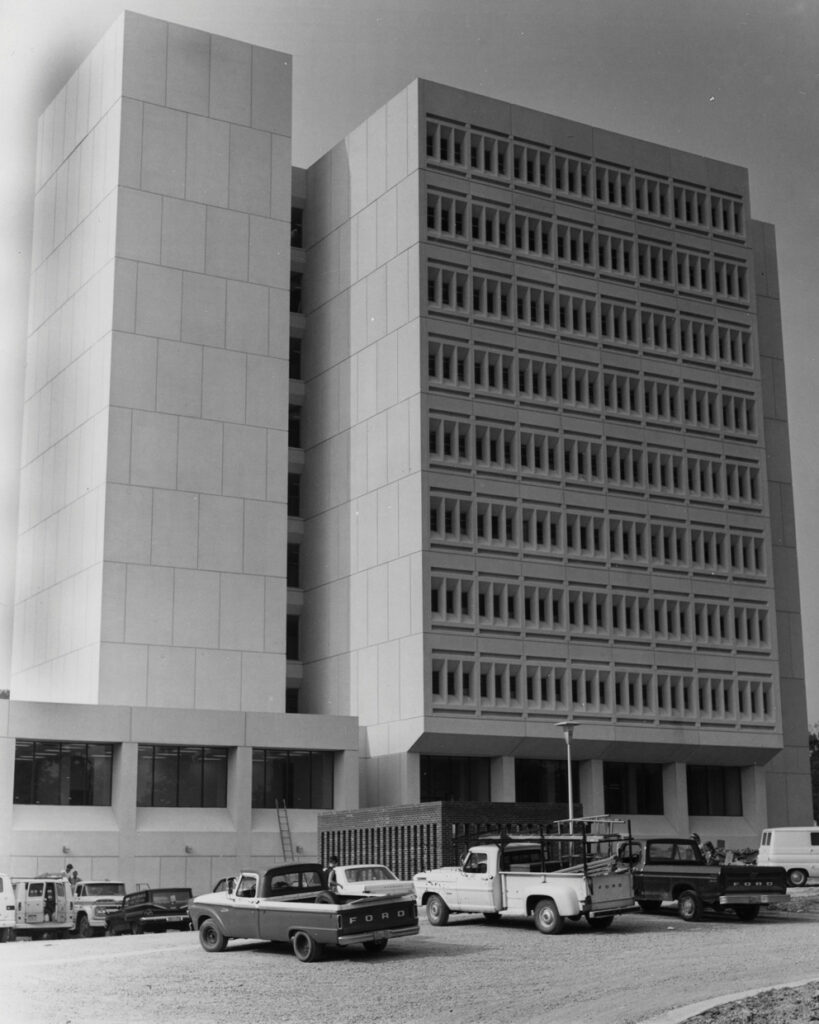
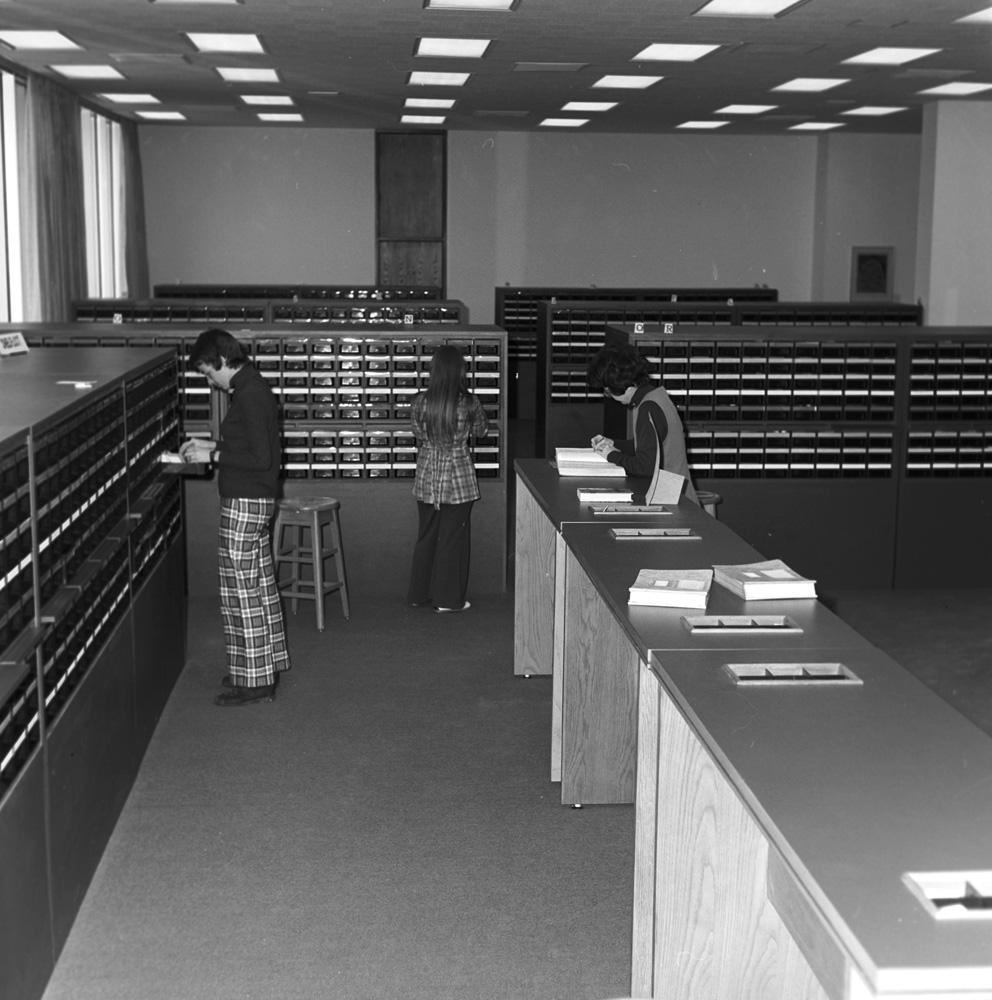
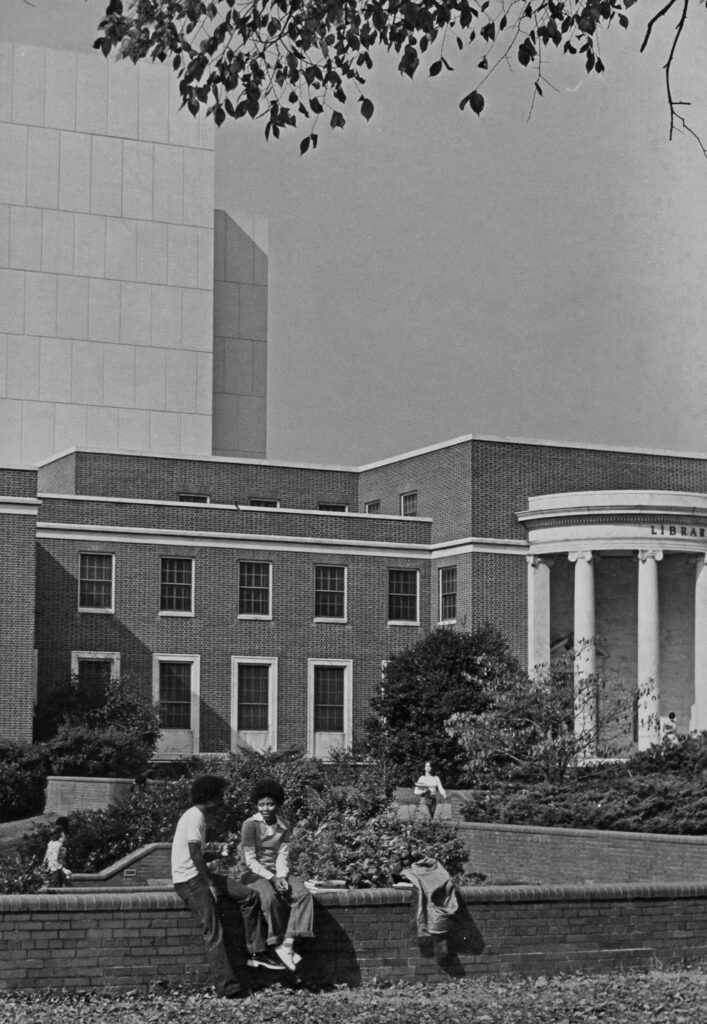
Jackson Library Tower Opens
By 1973, the number of volumes grew to 539,161, with serial subscriptions numbering 4,575 and 207,170 additional holdings in microtext. The “tower of books,” as a 1973 alumni magazine called the tower addition, was designed by firm Odell Associates. Floors two through nine shelved the bulk of the collection and featured 64 faculty studies, 184 built-in carrels for graduate students, and eight typing rooms.